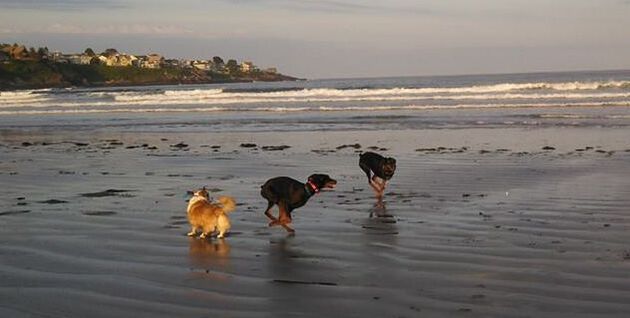
 Play training focuses on the reward of play for engagement, enthusiasm, and motivation of the tasks, obedience, behavioral change, and relationship being formed. It sounds easy, right? The dog does this, and then we go and do that. The knowledge of the impending reward of continuing the game increases the likely hood of the behavior and/or performance that you want. In theory, it is easy. In practice, you can make mistakes that I would rather others avoid if possible.
 In 2011 I came across a YouTube video of a trainer, Mike Ellis, who is a well known sports dog trainer. I hadn't heard of him, as he wasn't a fixture in pet dog training or AKC obedience. What he was doing absolutely blew me away, and he was having a seminar in RI the next week. I paid the very reasonable price to attend with a non working or audit spot (means you don't bring a dog to work and be coached), as all the working spots were filled. The seminar was called "Focus and Drive". This was the beginning of my play training journey. I am going to do a series on play training on this blog for the next few weeks (or more). On Sundays, I am going to try to blog and post (on our Facebook page) Shana's training progress. Normally I am training Shana because:
This fall though, we are taking a trip to Boston, and staying in a very fun dog friendly hotel across from Fenway Park. Shana has only been to a city a few times in her life. City distractions are very different than the distractions she sees in a small town (and some of those still can scare her or put her on defense drive). So now I have a specific goal that I am training for.  Barking is a legitimate way for dogs to communicate with us. There are many situations where it is valuable for your dog to bark and communicate with you. You want them to bark when a stranger arrives, something smells funny, wild life is outside, someone has entered your house or car, and so on. Our previous blog post went over many of these reasons, and how barking is used to communicate to us. This blog post will go over the many strategies to begin to be able to communicate that barking should stop.  Avoidance behaviors in dogs are simply a step towards the end result of practiced impulse control and behavioral modification. Some dogs will not even seem to take this step, and usually that is become they are confident with an even temperament. An example of avoidance behavior is a dog that looks in the opposite direction from a dog they would like to bark at. Avoidance is simply the step taken to practice impulse control over a trigger that used to make them react, hide from, or leave the area entirely. Fearful dogs behaviors can range from freezing and avoiding to reactivity and aggression. In any case and no matter what the owner knows of the dog's history, fear and insecurity holds the dog back from having their best life. Dog's need more than a safe home, food, and affection to enjoy their life fully. There are many ways their needs can be met, but fear can intrude on those activities that make their life rich. Activities like:
|
Author, Robin RubinOwner and Head Dog Trainer in Maine, Robin Katherine Rubin, started her Maine dog training business in September 2004. Our dog training facility is located in Southern Maine in York Beach and we help families enjoy their dogs more, making sure they listen reliably and resolving unwanted behaviors. Archives
July 2024
Categories
All
|



 RSS Feed
RSS Feed